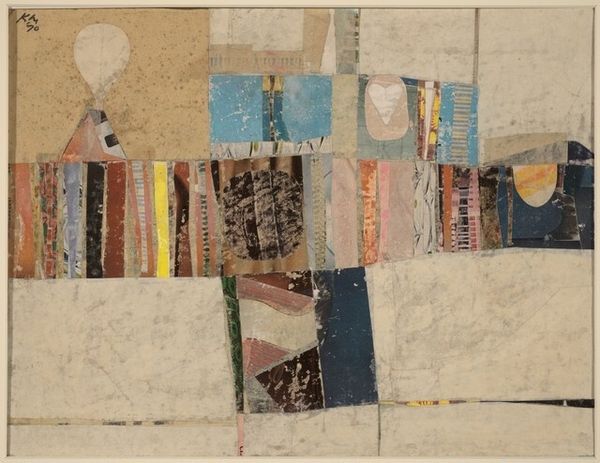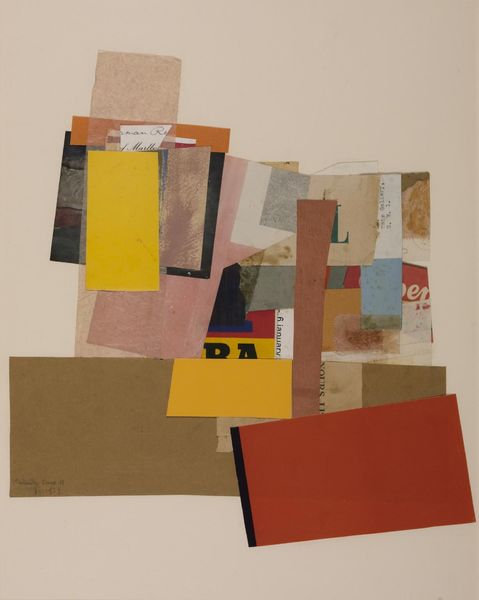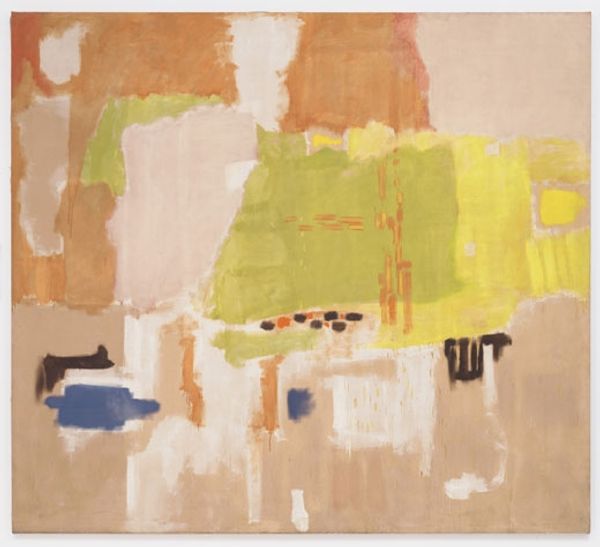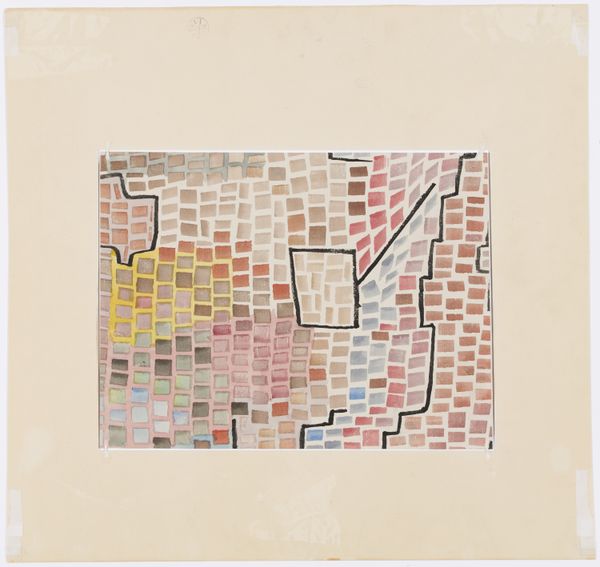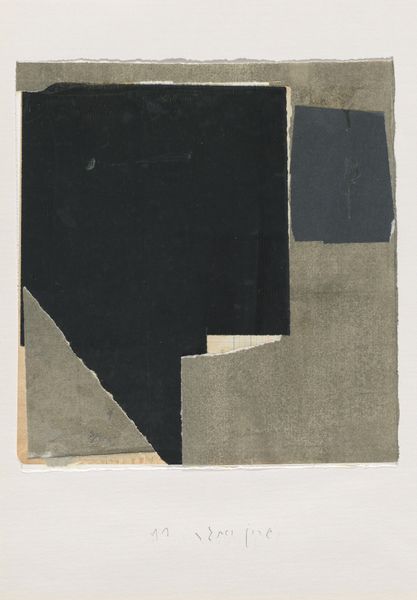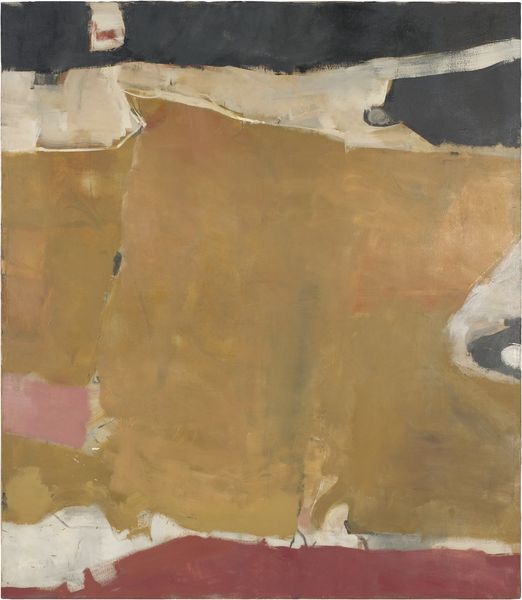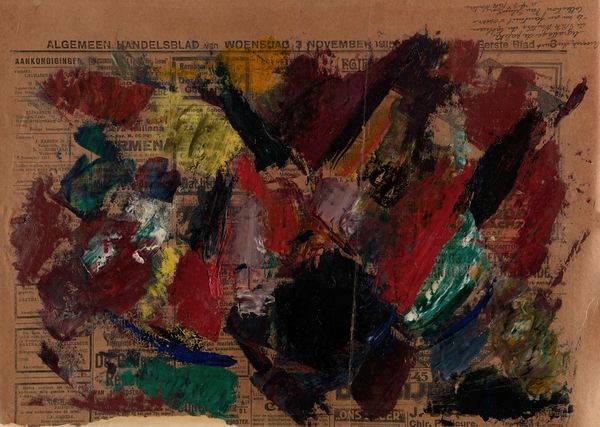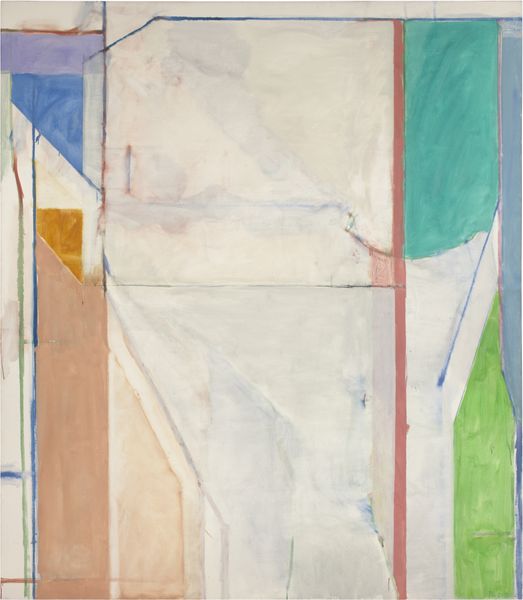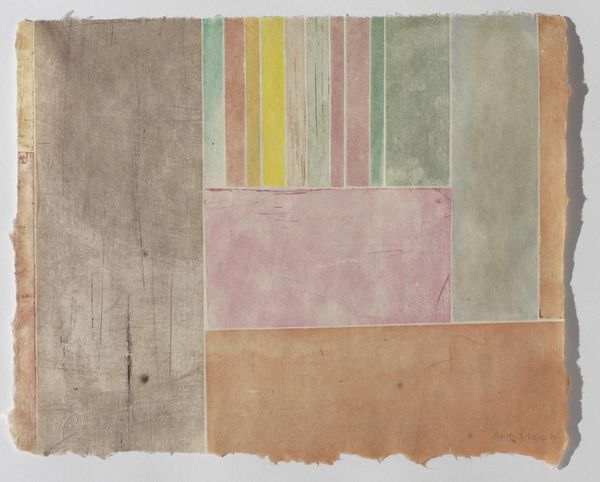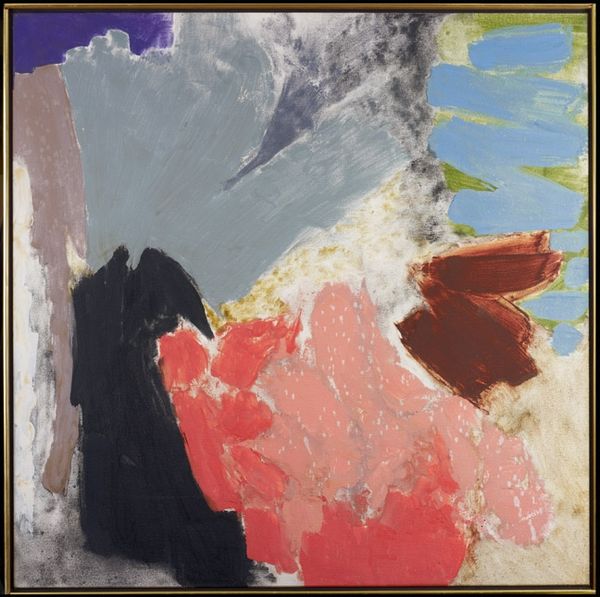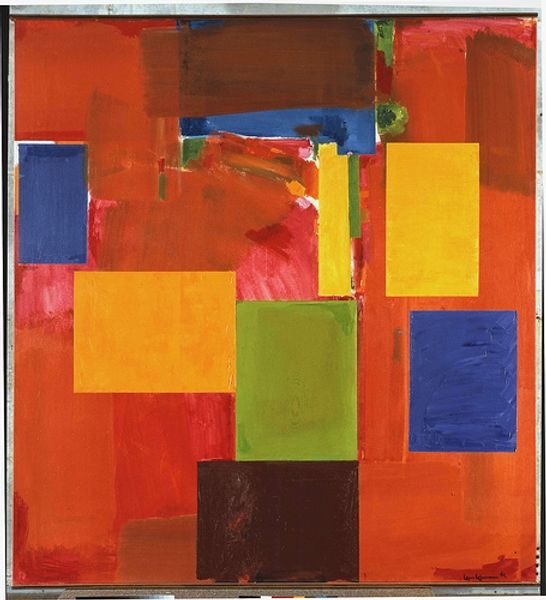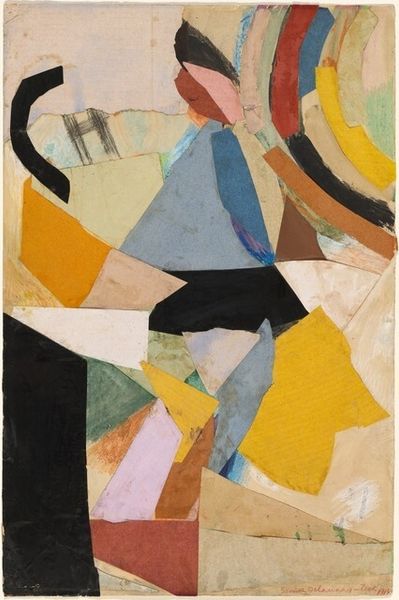
mixed-media, collage, paper
#
mixed-media
#
collage
#
paper
#
abstract
#
geometric
#
modernism
Dimensions: overall: 55.9 x 61 cm (22 x 24 in.)
Copyright: National Gallery of Art: CC0 1.0
Editor: We're looking at George Bunker's "Collage for 'Garden #2'" from around 1963, a mixed-media collage. It’s fascinating, a blend of geometric forms suggesting a fragmented landscape. What do you see in this piece, especially concerning its time? Curator: What I find compelling is how Bunker’s abstraction participates in the mid-century dialogue about nature and urban space. This isn't a straightforward representation of a garden. The collage medium itself, with its layering and repurposing of materials, speaks to the constructed nature of our environments, both natural and built. Editor: Constructed, how so? Curator: Consider the socio-political context. The 1960s witnessed significant urban development and anxieties about environmental degradation. By presenting a “garden” as a collection of fractured planes and textures, Bunker reflects a critical view of idealized landscapes. He may have been subtly questioning society's relationship to the natural world amidst rapid change. Editor: So, it’s not just about aesthetics, but also a commentary? Curator: Absolutely. Art doesn’t exist in a vacuum. What institutions were displaying works like these at the time? Who was the intended audience? Knowing the answers provides even richer understanding. How might those factors influence your interpretation? Editor: I hadn't thought about that… Makes me think about how the work may reflect urban flight to more constructed suburban gardens and escapes. Curator: Exactly! We both are seeing new levels here now. Editor: I appreciate learning about the layers beneath just visual appeal; it's a new lens for examining art. Curator: And I am enlightened by new angles from future leaders like you. It highlights how art constantly renegotiates its relevance within evolving cultural conversations.
Comments
No comments
Be the first to comment and join the conversation on the ultimate creative platform.

